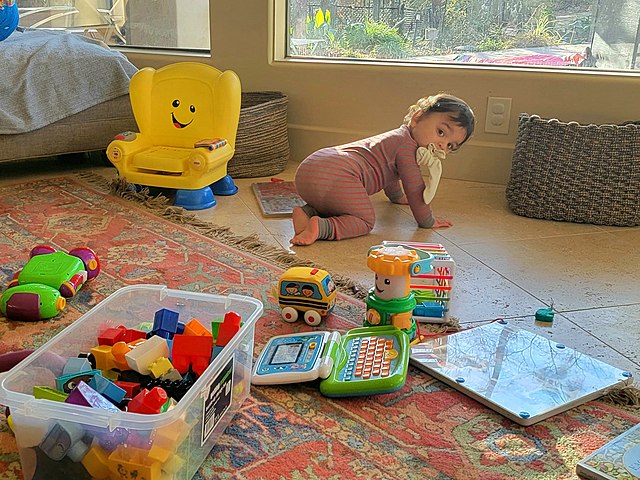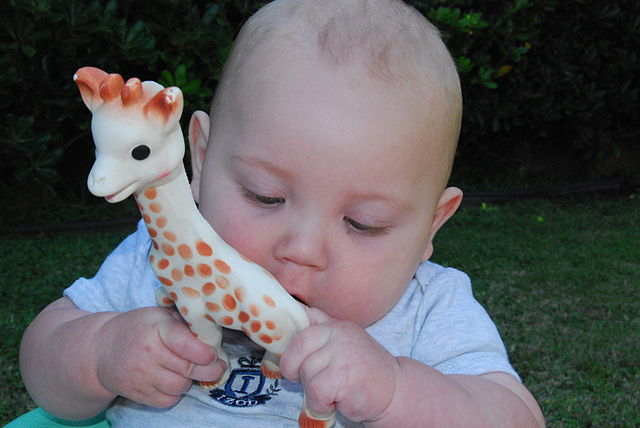Welcome to our comprehensive guide on childproof cabinet locks! As parents, caregivers, or anyone with little explorers at home, we understand the paramount importance of ensuring our kids’ safety. Cabinets can be fascinating hiding spots for curious minds, but they can also be filled with potential hazards. That’s where childproof cabinet locks come into play.
In this guide, we’ll take you through everything you need to know about these essential safety devices. From the various types of locks available to installation tips and common mistakes to avoid, we’ve got you covered.
Types of Childproof Cabinet Locks
Childproofing your home is a top priority for parents and caregivers, and when it comes to safeguarding your little ones from potential hazards, cabinet locks play a crucial role. In this section, we’ll dive deep into the world of childproof cabinet locks, helping you understand the different types available and their unique benefits. Whether you’re concerned about curious toddlers or mischievous explorers, finding the right cabinet lock can make all the difference.
Magnetic Cabinet Locks
Magnetic cabinet locks have gained popularity among parents and caregivers for their blend of functionality and aesthetics. These locks utilize a magnetic “key” that discreetly unlocks your cabinet doors. What sets them apart is their ability to stay hidden from view, preserving the overall look of your cabinets.
In today’s modern homes, where design matters, magnetic cabinet locks are a top choice, ensuring that your childproofing efforts don’t compromise the visual appeal of your living space.
Adhesive Cabinet Locks
Adhesive cabinet locks have carved their niche in the world of childproofing thanks to their ease of installation and adaptability. These locks adhere directly to your cabinet doors or handles, eliminating the need for drilling holes – a blessing for renters who want to protect their little ones without damaging the property.
It’s worth noting that adhesive locks are not only quick to install but also easy to remove, leaving no marks or sticky residue behind. This convenience makes them an excellent choice for those seeking a fuss-free solution.
Knob Covers
Sometimes, simplicity is key, and that’s precisely what knob covers bring to the table. These covers slip over your existing cabinet knobs, rendering them challenging for tiny hands to grip and open. The best part? No tools or complicated installations are required. Knob covers are not only effective but also budget-friendly, making them a valuable addition to any comprehensive childproofing plan.
Locking Straps and Latches
While not initially on our list, it’s essential to include locking straps and latches when discussing cabinet locks. These versatile solutions are perfect for securing cabinet doors, drawers, and even appliances. Their adaptability means they can be used throughout your home, making them a go-to choice for those seeking a multipurpose childproofing solution.
Cord Locks
If your cabinets have pull cords or strings, cord locks are a must-have addition to your childproofing arsenal. These locks ensure cords and blinds remain secure, preventing children from getting tangled or tugging on them. Cord locks are especially crucial in homes with vertical blinds, curtains, or window coverings that have cords within a child’s reach.
Multi-Purpose Straps
Multi-purpose straps are the Swiss Army knife of childproofing, offering adaptability in safeguarding not only cabinets but also appliances, toilets, and even restricted areas. These straps provide exceptional value for your childproofing investment, ensuring that your home remains a safe haven for your little ones.
Now that you’re acquainted with the diverse world of childproof cabinet locks, you can make an informed decision that aligns with your specific needs and preferences. Remember, the safety of your children is paramount, and with the right cabinet locks in place, you can provide them with a secure environment to explore and grow.

How to Install Childproof Cabinet Locks
Installing cabinet locks is a straightforward process. Here’s a step-by-step guide to help you get started:
- Gather Your Supplies: You’ll need the chosen cabinet locks, a screwdriver (if required), and any additional tools mentioned in the product instructions.
- Identify Cabinet Doors and Handles: Determine which cabinets need childproofing. It’s not just the kitchen cabinets; consider bathroom and utility room cabinets too.
- Clean the Surface: Ensure the cabinet surface is clean and dry before attaching adhesive locks. This ensures a strong bond.
- Follow Manufacturer’s Instructions: Different lock types may have specific installation instructions. Follow these carefully to ensure proper installation.
- Test the Locks: After installation, test the locks to make sure they work correctly. You want them to be secure but easy for adults to open.
Tips for Choosing the Right Cabinet Locks
Selecting the perfect cabinet locks for your home requires careful consideration. Here are some additional tips to help you make the right choice:
Material Compatibility
When choosing cabinet locks, take into account the material of your cabinets. Different locks work better with specific materials. For wooden cabinets, most locks are compatible, but for glass or metal cabinets, you might need specialized locks.
Ease of Use and Accessibility
One essential factor often overlooked is the ease of use for adults. While your primary goal is to keep children out of cabinets, you don’t want the locks to become a daily frustration. Locks should strike the right balance between childproofing and adult accessibility. It’s important that locks are easy for adults to open quickly when needed.
Durability and Longevity
Nobody wants to replace cabinet locks frequently. Invest in durable locks made of high-quality materials. While budget-friendly options may seem attractive, long-term durability is essential to ensure the locks remain effective over time.
Common Mistakes to Avoid
Childproofing your home, including cabinets, is a crucial step in ensuring your child’s safety. However, there are some common pitfalls that parents and caregivers often fall into. By being aware of these mistakes, you can better protect your little one.
Incomplete Childproofing
One of the most common mistakes is only childproofing certain cabinets and overlooking others. While the kitchen might be your primary concern, don’t forget about bathroom and utility room cabinets. These can contain equally hazardous items like cleaning supplies and medications. Comprehensive childproofing should extend to all potentially harmful areas in your home. This also includes creating a baby safety kit in case of emergencies.
Loose or Inadequate Locks
Sometimes, in an effort to make locks easier for adults to use, they end up being less effective in deterring children. Choosing locks that are too loose or not secure enough defeats the purpose of childproofing. Parents should select locks that provide a strong barrier against curious little hands while remaining manageable for adults.
Delaying Childproofing
Another common mistake is waiting too long to start childproofing. Child accidents can happen as soon as your baby begins to crawl, which is typically around 6-10 months. It’s essential to start childproofing early to prevent accidents before they occur.
Assuming Kids Won’t Figure It Out
Never underestimate a child’s curiosity and determination. Parents sometimes believe that their child won’t be able to figure out a lock or latch. However, kids are naturally curious and surprisingly resourceful. Choose locks that are not only secure but are also designed to be challenging for little ones to manipulate.
Not Educating Family Members or Caregivers
Sometimes, grandparents, babysitters, or other family members may not be familiar with the childproofing measures you’ve put in place. This can lead to accidents when someone accidentally leaves a cabinet unlocked. It’s essential to educate everyone who has access to your home about the childproofing systems you’ve implemented.
Ignoring Regular Maintenance
Over time, childproofing devices can wear out or become less effective. Periodically check and maintain cabinet locks. Replacing worn-out locks or tightening loose ones ensures that your child remains protected.
Using Easily Defeatable Locks
Parents might opt for locks that are quick to open in an emergency, but this convenience can be a detriment when it comes to childproofing. Childproof locks should provide a substantial barrier against children while still allowing adults to access the cabinets easily when necessary.
Underestimating Children’s Climbing Abilities
As children grow, their abilities change. They may learn to climb and access cabinets that were previously out of reach. Parent should remain vigilant and adapt their childproofing measures as their child’s capabilities evolve.

Frequently Asked Questions
Let’s address some common questions about childproof cabinet locks:
Can I use childproof cabinet locks on all types of cabinets?
Childproof cabinet locks are designed to work with most cabinet types, including wooden, metal, and glass cabinets. However, the installation method may vary depending on the material.
Will adhesive locks damage my cabinets?
Adhesive locks are designed to be non-damaging. However, it’s essential to follow the manufacturer’s instructions carefully and remove them correctly when no longer needed.
At what age should I start using cabinet locks?
It’s best to start childproofing as soon as your child begins to crawl, usually around 6-10 months.
Childproofing Beyond Cabinet Locks
Childproofing your home extends far beyond just installing cabinet locks. To create a safe environment for your little one, consider additional measures that can enhance overall child safety.
Outlet Covers
One often overlooked hazard is electrical outlets. Young children are naturally curious and may attempt to insert objects into sockets. It’s important to have outlet covers, which provide a physical barrier to prevent accidents.
Stair Gates
Staircases pose a significant risk to children who are just beginning to explore. Install sturdy stair gates at the top and bottom of staircases to prevent falls. There are different types of gates available, such as pressure-mounted and hardware-mounted gates, and it’s important to do your research to find which ones work best for your needs.
Safety Latches for Drawers and Cabinets
While you’re focused on cabinet locks, don’t forget about drawers. Children love to explore drawers, which can contain sharp objects, small items, or choking hazards. Use safety latches for drawers to keep them securely closed. There are various latch options available, including magnetic and adhesive latches.
Furniture Anchors
Tall or heavy furniture can tip over if climbed on by a curious child. It’s important to anchor furniture to the wall to prevent accidents. Furniture anchors can secure bookshelves, dressers, and other potentially unstable pieces.
Corner Protectors
Sharp furniture corners and edges can cause painful bumps and bruises. The use of corner protectors or edge guards can cushion against these hazards. These products come in various materials, including foam and rubber, and can be easily attached to furniture.
Childproofing Appliances
Household appliances can be dangerous if not properly secured. Secure appliances like stoves, ovens, and refrigerators to prevent children from opening or tampering with them. Appliance locks and safety straps as effective solutions.
Door Knob Covers
Door knob covers are essential for rooms you want to keep off-limits to children, such as home offices or storage areas. These covers fit over standard door knobs, making it challenging for young children to turn them.
Cord Management
Loose cords from blinds, curtains, and electronics pose a strangulation risk to children. These cords should be secured out of reach or use cord wind-ups to prevent accidents. Choosing cordless window coverings are suggested when possible.
Secure Heavy Objects
If you have heavy objects like TVs or artwork on walls or furniture, secure them to prevent them from falling if a child attempts to climb. You can use wall mounts, brackets, and anti-tip straps for securing these items.
Peace of Mind with Childproof Cabinet Locks
Childproof cabinet locks are your first line of defense in keeping your little ones safe at home. By understanding the types of locks available, how to install them, and common mistakes to avoid, you’re well on your way to creating a secure environment for your child.
Don’t forget to explore other childproofing measures and always stay informed about child safety. Together, we can ensure a happy and safe home for our little explorers.








